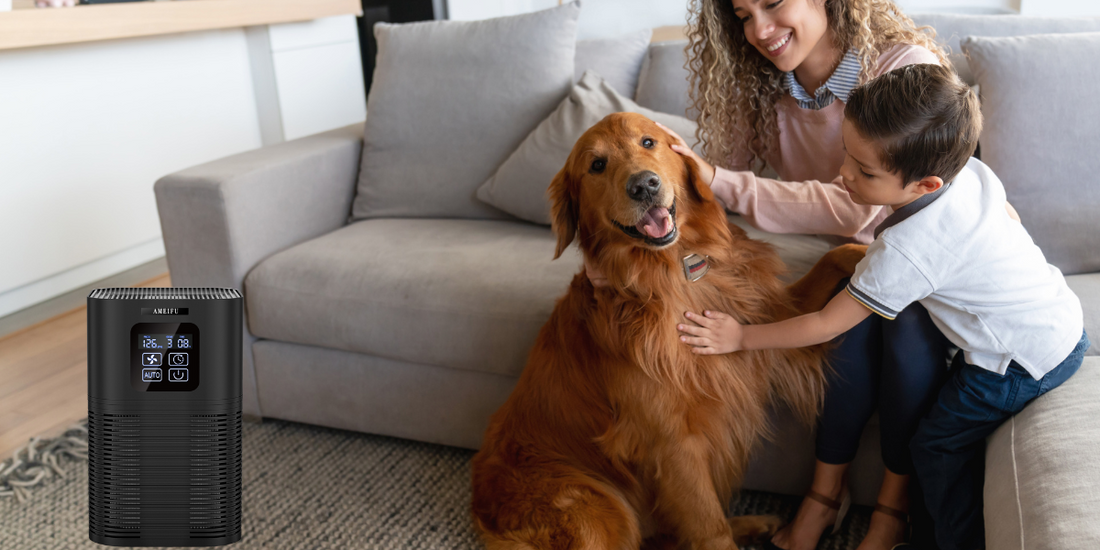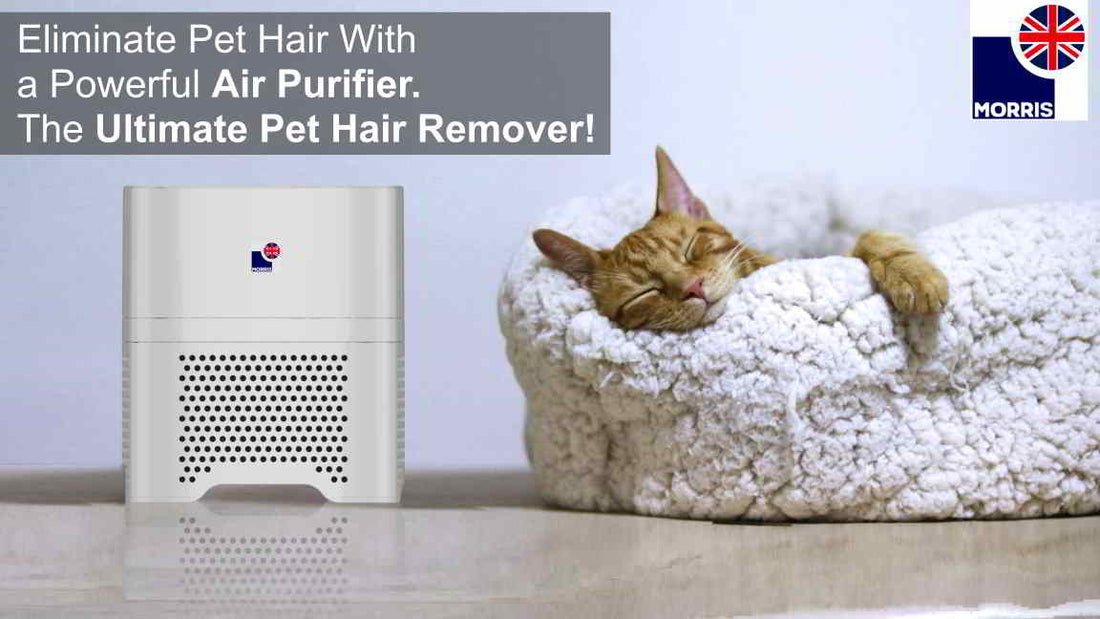Yes, air purifiers can help reduce pet dander in indoor air. They use filters to capture tiny particles, including pet dander, improving air quality.
But how effective are they? Many pet owners struggle with allergies caused by pet dander. Even if you love your furry friends, their dander can cause sneezing, coughing, and itchy eyes. Air purifiers might offer a solution. These devices are designed to clean the air, trapping allergens and making your home more comfortable.
But do they really work against pet dander? In this blog, we will explore how air purifiers function, their effectiveness in removing pet dander, and what to look for when choosing one. Stay tuned to find out if an air purifier can make your home a haven for both you and your pets.
Introduction To Pet Dander
Pet dander is a common concern for many pet owners. These tiny particles can cause allergies and other respiratory issues. Understanding pet dander is crucial for maintaining a healthy indoor environment.
What Is Pet Dander?
Pet dander consists of tiny flakes of skin shed by cats, dogs, and other animals. These flakes are so small that they can easily become airborne and spread throughout your home. While pet dander is not harmful to everyone, it can cause significant problems for individuals with allergies or asthma.
Common Sources Of Pet Dander
Pet dander primarily comes from the skin, fur, and feathers of animals. Here are some common sources:
- Cats: Cats are a significant source of pet dander. Their grooming habits cause dander to spread quickly.
- Dogs: Dog breeds with long hair or thick coats tend to produce more dander.
- Birds: Birds shed feather dust, which is another form of dander.
- Small mammals: Animals like hamsters, guinea pigs, and rabbits also shed dander.
Reducing pet dander involves regular cleaning and grooming. Using air purifiers can also help capture these tiny particles, improving indoor air quality.
Impact Of Pet Dander On Health
Pet dander can trigger allergies and asthma. Air purifiers with HEPA filters effectively capture and eliminate pet dander. Cleaner indoor air improves health and comfort.
Pet dander can affect your health in many ways. Tiny particles from pets’ skin, fur, or feathers can trigger allergies and other health issues. Understanding these effects can help you keep your home safe and clean.Allergic Reactions
Pet dander can cause allergic reactions in sensitive individuals. Common symptoms include:- Sneezing
- Runny or stuffy nose
- Itchy or watery eyes
- Skin rashes
Respiratory Issues
Exposure to pet dander can lead to respiratory issues. This is particularly true for people with asthma or other lung conditions. Common respiratory problems include:- Wheezing
- Shortness of breath
- Chest tightness
- Chronic cough
Air Purifiers: How They Work
Air purifiers can help improve indoor air quality. They remove contaminants, including pet dander. Understanding how these devices work is essential. Let’s dive into their basic mechanism and different types.
Basic Mechanism
Air purifiers draw in air from the room. They pass it through filters. These filters trap particles. Clean air is then released back into the room. The process repeats continuously. This helps reduce the amount of pet dander in the air.
Types Of Air Purifiers
There are various types of air purifiers. Each has its own method of cleaning the air. Here are the most common types:
HEPA Filters: These are highly efficient. They capture tiny particles, including pet dander. They can trap particles as small as 0.3 microns.
Activated Carbon Filters: These filters are good for removing odors. They absorb gases and chemicals. They are often used with HEPA filters.
Ionizers: These devices release charged ions into the air. The ions attach to particles, making them heavy. The particles then fall to the ground or attach to surfaces.
UV Light Purifiers: These use ultraviolet light. They kill or neutralize bacteria and viruses. They are often used in combination with other filters.
Ozone Generators: These produce ozone. Ozone can remove odors and kill bacteria. However, they are less effective at removing particles like pet dander.
Choosing the right air purifier depends on your needs. Consider the type of contaminants you want to remove. For pet dander, HEPA filters are usually the best choice.
Effectiveness Of Air Purifiers Against Pet Dander
Pet dander can trigger allergies and asthma. Many pet owners seek effective ways to eliminate it from their homes. Air purifiers are often recommended. But how effective are they? Let’s explore.
Hepa Filters
HEPA filters are known for their high efficiency. They can capture particles as small as 0.3 microns. This includes pet dander. Here are some key points:
- HEPA stands for High-Efficiency Particulate Air.
- These filters trap 99.97% of airborne particles.
- They are excellent for removing pet dander.
HEPA filters are often found in high-quality air purifiers. They ensure that the air in your home stays clean and free from pet allergens.
Activated Carbon Filters
Activated carbon filters work differently. They are not designed to capture particles. Instead, they absorb gases and odors. This can be useful for homes with pets. Here are some benefits:
- Activated carbon filters can remove pet odors.
- They help in absorbing harmful gases.
- These filters complement HEPA filters well.
While they may not capture pet dander, they improve overall air quality. Using both HEPA and activated carbon filters together can be very effective.
| Filter Type | Removes Pet Dander | Removes Odors | Removes Gases |
|---|---|---|---|
| HEPA Filter | Yes | No | No |
| Activated Carbon Filter | No | Yes | Yes |
In summary, air purifiers with HEPA filters are effective against pet dander. Activated carbon filters help with pet odors and gases. Using both types of filters can greatly improve indoor air quality.
Additional Benefits Of Air Purifiers
Air purifiers offer many benefits beyond removing pet dander from the air. They help create a cleaner, healthier indoor environment. Let’s explore some of the additional benefits that air purifiers provide.
Odor Removal
Pets can bring unpleasant odors into the home. Air purifiers with activated carbon filters can remove these smells. They trap and neutralize odor molecules in the air. This leaves your home smelling fresh and clean.
Reduction Of Other Allergens
Air purifiers also tackle other indoor allergens. These include dust mites, pollen, and mold spores. High-efficiency particulate air (HEPA) filters capture these tiny particles. This helps reduce allergy symptoms for everyone in the home.

Credit: www.amazon.com
Limitations Of Air Purifiers
Air purifiers can be helpful in reducing pet dander. Yet, they come with certain limitations. Understanding these can help you make informed decisions about their use.
Size And Coverage Area
The size of an air purifier plays a crucial role in its effectiveness. Not all air purifiers can cover large rooms. Some are designed for smaller spaces. If your room is large, you may need multiple units. This can become costly and less efficient.
Check the coverage area specifications before purchasing. A mismatch can lead to poor performance. It’s essential to match the unit’s capacity with your room size.
Maintenance Requirements
Maintenance is another limitation to consider. Air purifiers require regular upkeep. Filters need changing or cleaning frequently. Ignoring this can reduce their efficiency.
Most air purifiers have HEPA filters. These are excellent for trapping pet dander. But, they need to be replaced every 6 to 12 months. Some models have washable filters. While these save money, they still need regular cleaning.
Here’s a quick comparison:
| Filter Type | Maintenance | Cost |
|---|---|---|
| HEPA | Replace every 6-12 months | High |
| Washable | Clean every 3 months | Low |
Regular maintenance ensures the purifier works at its best. Neglect can lead to poor air quality. Always check the manual for specific maintenance instructions.
Complementary Strategies To Reduce Pet Dander
Air purifiers are excellent for removing pet dander from indoor air. Yet, they work best when combined with other strategies. Here are some complementary methods to reduce pet dander in your home.
Regular Cleaning
Regular cleaning helps keep pet dander levels low. Vacuum carpets, rugs, and furniture often. Use a vacuum with a HEPA filter for better results. Dust surfaces with a damp cloth to trap dander. Don’t forget to clean pet bedding and toys. Wash them regularly to remove trapped dander.
Pet Grooming Tips
Grooming your pet can reduce the amount of dander they shed. Brush your pet regularly to remove loose fur and dander. Choose a brush designed for your pet’s fur type. Bathe your pet as recommended by your vet. Regular baths help control dander levels.
Use pet-friendly shampoos to avoid skin irritation. Also, keep your pet’s living area clean. This includes their bedding, toys, and feeding area. A clean environment means less dander.

Credit: myameifu.com
Choosing The Right Air Purifier
Pet dander can make indoor air unhealthy. Choosing the right air purifier is crucial to improve air quality. Not all purifiers are effective against pet dander. Understanding key features will help you make the best choice.
Key Features To Consider
First, focus on the filter type. HEPA filters capture tiny particles, including pet dander. Ensure the purifier has a true HEPA filter, not a HEPA-like filter. Check the CADR rating. It shows how effectively the purifier cleans the air. Higher CADR means better performance. Noise levels matter too. You don’t want a noisy machine disrupting your peace. Look for a model with a noise level below 50 decibels.
Energy efficiency is another factor. Choose a purifier with an Energy Star rating. It will save on electricity bills. Consider the size of the room. Some purifiers are only effective in small spaces. Make sure the device matches your room size. Finally, check for additional features. Some purifiers offer smart controls or air quality indicators. These can make using the purifier more convenient.
Top Brands And Models
Several brands stand out for their quality and performance. Dyson offers models with advanced filtration and smart features. The Dyson Pure Cool is a popular choice. It combines air purifying and cooling in one device. Levoit is another trusted brand. The Levoit Core 300 is compact and effective. It uses a true HEPA filter and is budget-friendly. Coway also makes reliable air purifiers. The Coway AP-1512HH Mighty is known for its high CADR rating and quiet operation.
For larger rooms, consider Blueair. The Blueair Blue Pure 211+ covers large spaces and has a simple design. Honeywell has been a leader in air purification for years. The Honeywell HPA300 is powerful and covers large areas. Remember to read reviews and compare features. This will help you find the best air purifier for your needs.

Credit: www.amazon.com
Frequently Asked Questions
Can Air Purifiers Remove Pet Dander Effectively?
Yes, air purifiers can effectively remove pet dander. HEPA filters are particularly good at capturing dander particles. This improves indoor air quality.
What Type Of Filter Is Best For Pet Dander?
HEPA filters are best for removing pet dander. They capture 99. 97% of particles, including dander. This makes the air cleaner.
Do Air Purifiers Help With Pet Allergies?
Air purifiers help reduce pet allergens. HEPA filters trap dander, reducing allergy symptoms. This creates a healthier environment.
How Often Should I Run My Air Purifier?
Run your air purifier continuously for best results. This ensures constant removal of pet dander. Replace filters as recommended.
Conclusion
Air purifiers can help reduce pet dander in your home. They improve air quality. This means fewer allergies and easier breathing. Choose a purifier with a HEPA filter. It captures tiny particles like pet dander. Regular cleaning of filters is crucial.
It keeps the purifier working effectively. So, for a cleaner home environment, consider an air purifier. Your pets and your lungs will thank you.
Rakib Sarwar is a Registered Pharmacist and a reputed health and wellness blogger. He has a great interest in Air purifiers.
